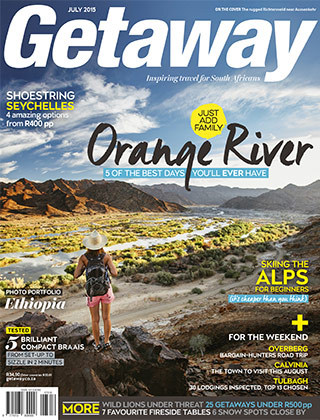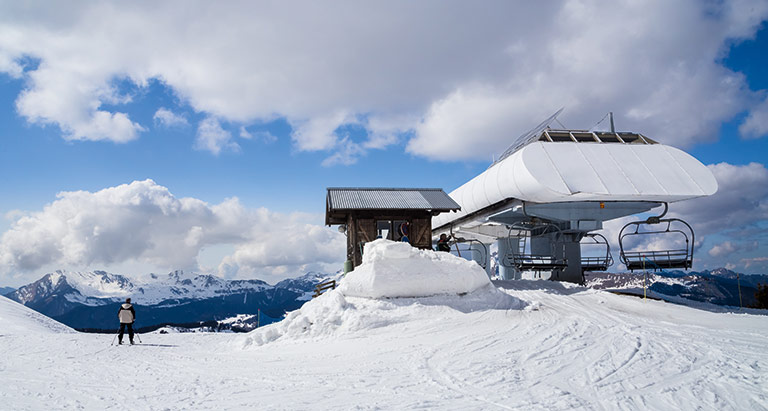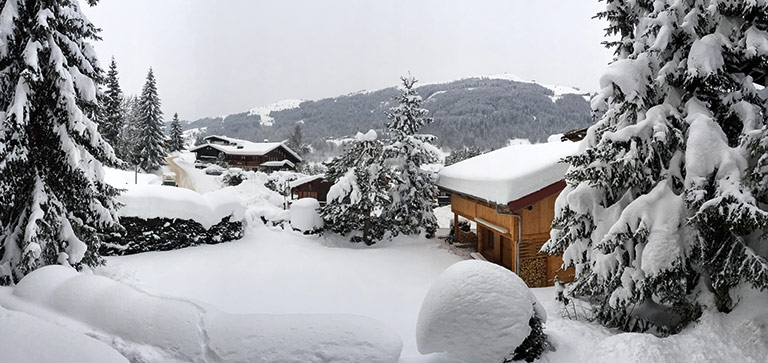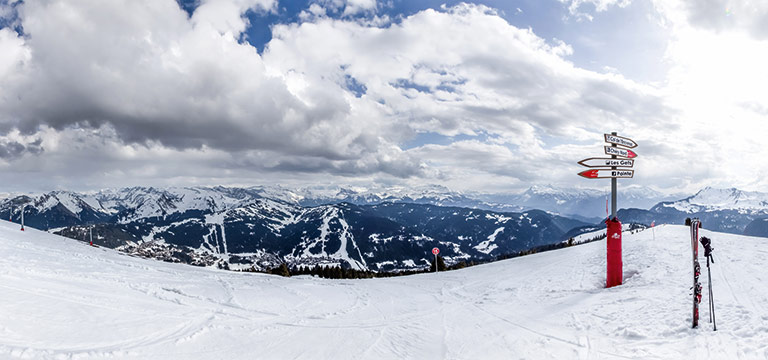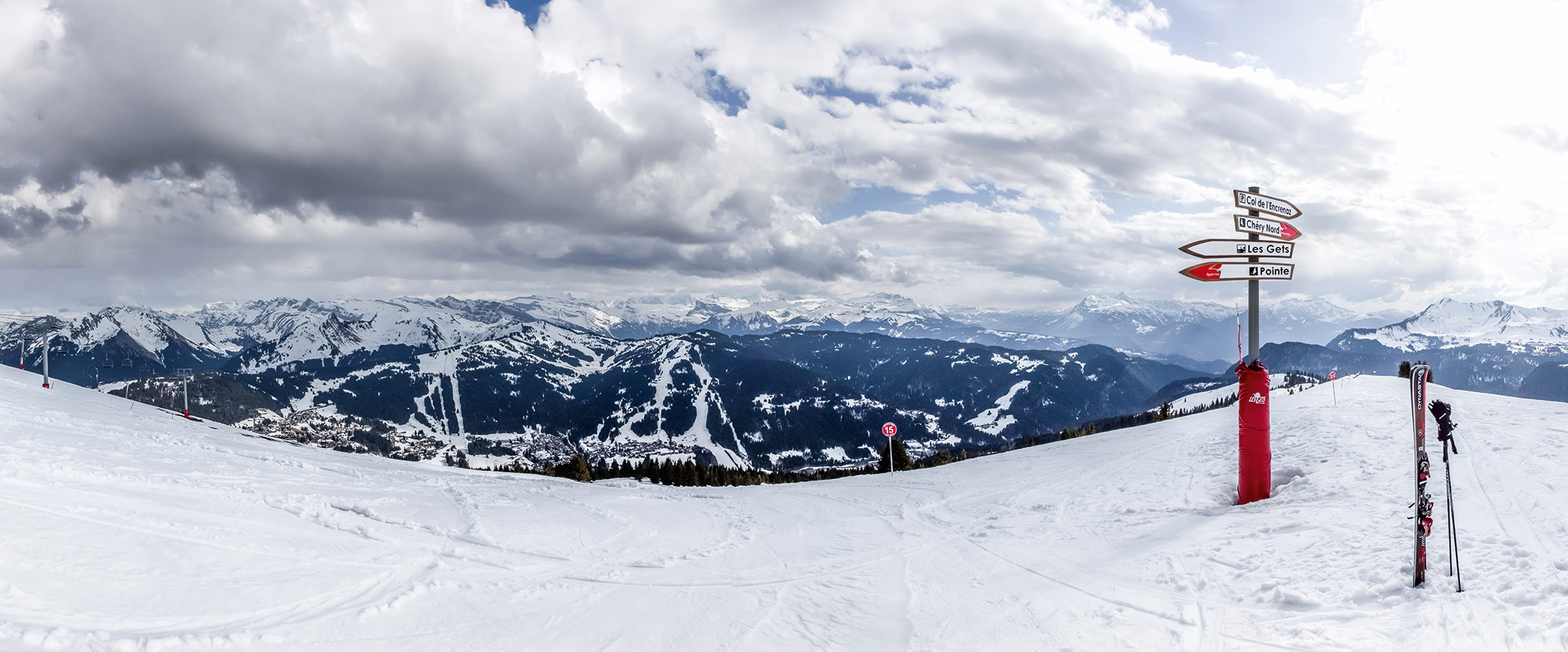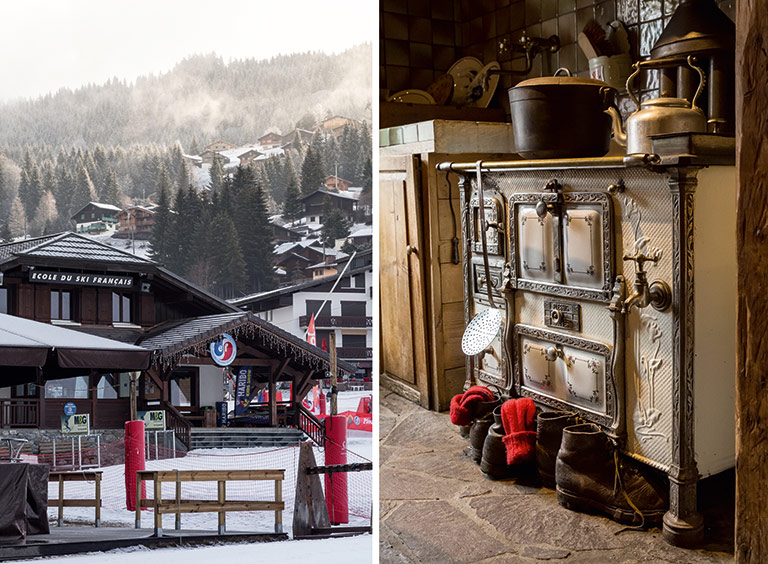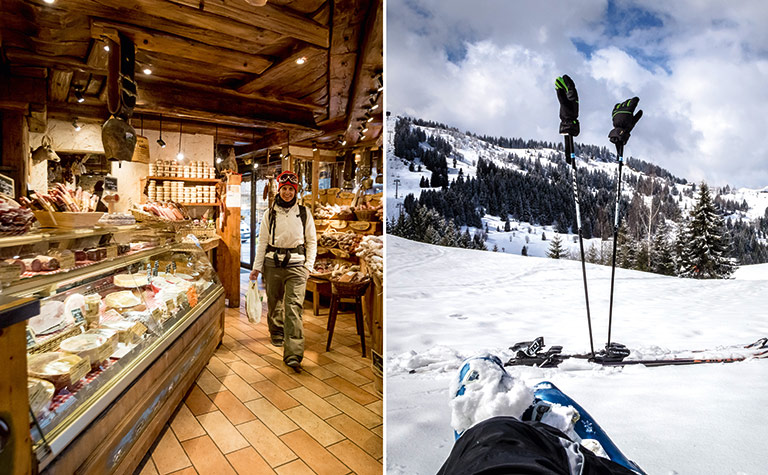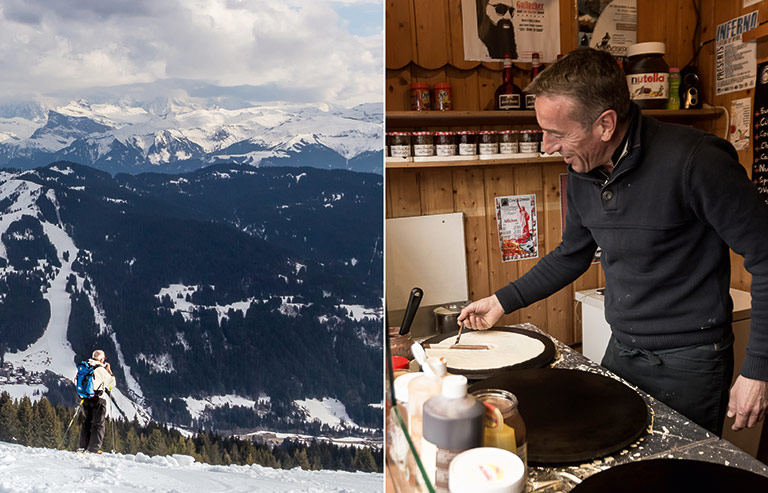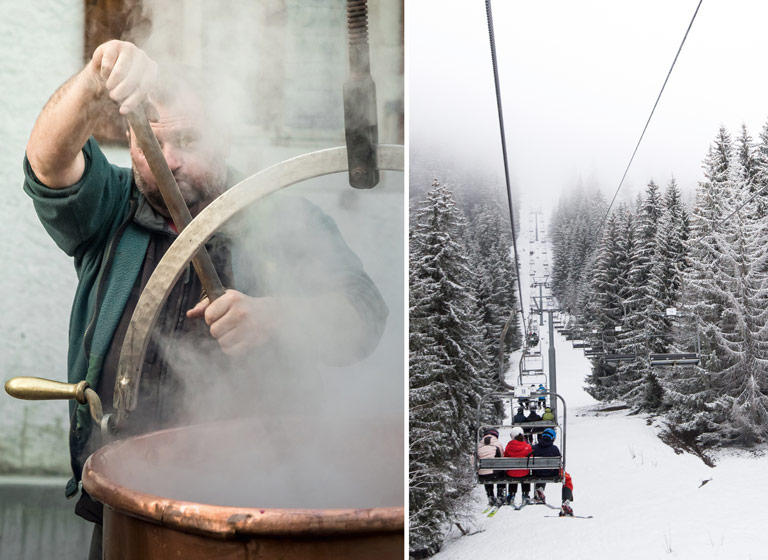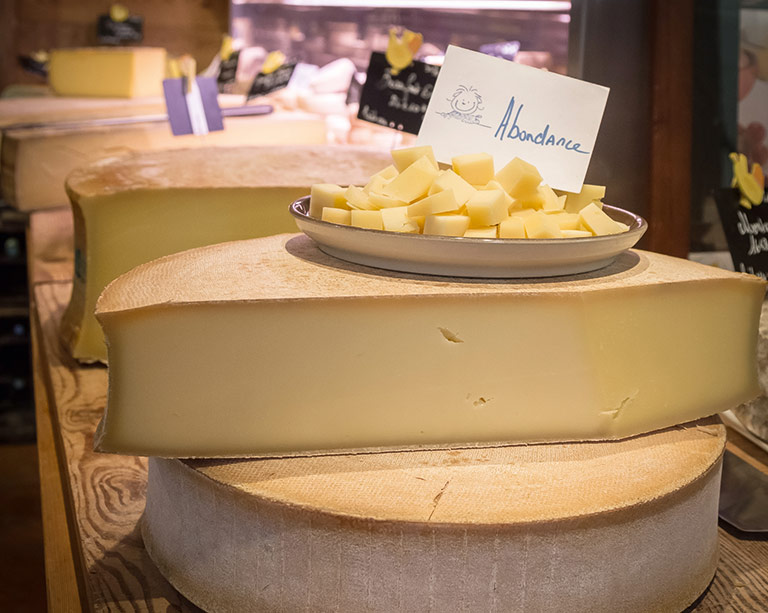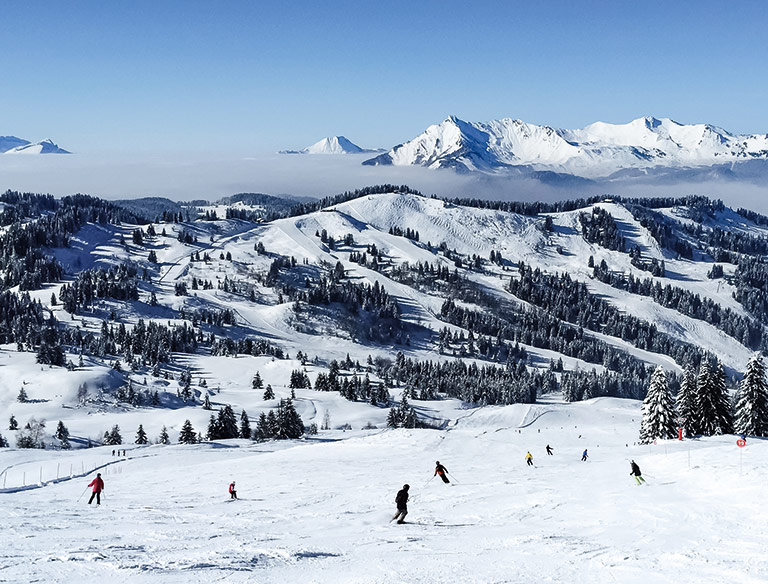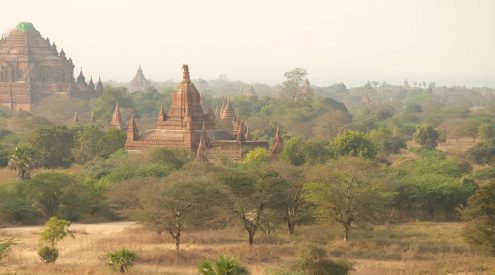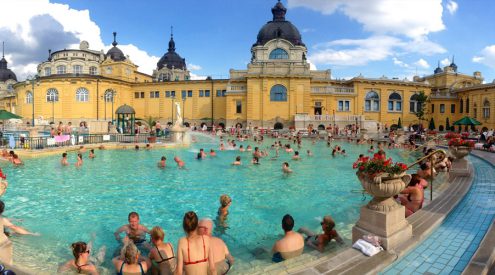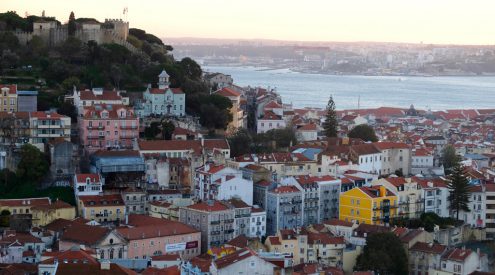Thought learning to ski in the French Alps was an out-of-reach holiday? It’s more affordable than you might think – that is, provided the rand doesn’t plummet too much further…
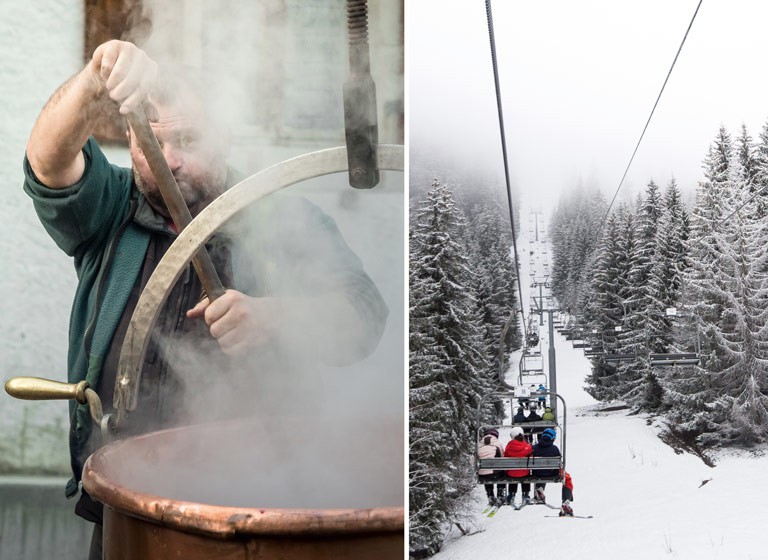
LEFT A cauldron of vin chaud (mulled wine) is prepared for welcome drinks at the town church every Monday, and it’s free; RIGHT a chairlift ascends into the clouds above Les Gets.
The views from the top of the Ranfoilly Express were beautiful – everything I’d hoped for as I’d poured over my Google image searches all those weeks before. The white dome of Mont Blanc was just visible through the clouds in the distance; snow-capped peak after snow-capped peak filled the void between.
Also read: skiing France in photos
I focused on them for a long time, making a show of taking photographs, and trying hard not to think of the red-slope precipice behind me. It was day two of my first-ever ski trip, I was on top of the highest peak in this little corner of the French Alps, and there was no other way down.
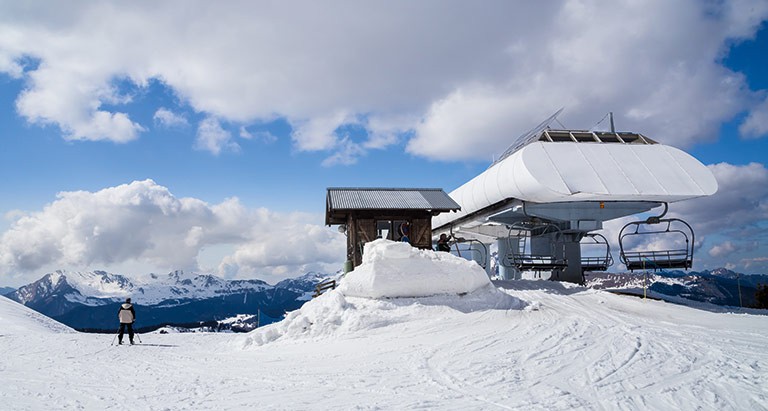
The four-seater Ranfoilly Express chairlift deposits experienced skiers at the 1826-metre summit for a thrilling ski back towards Les Gets.
At 1826 metres, Le Ranfoilly is by no means the highest summit in the Portes du Soleil ski region – a huge snowy playground that covers 12 resorts and more than 1000 square kilometres; a staggering 650 kilometres of marked ski runs serviced by about 200 lifts. Portes du Soleil (roughly translated as ‘Gateways to the Sun’) is one of the largest inter-connected ski regions in the world, rivalled only by neighbouring Les 3 Vallées to the south, which has slightly more pistes (graded slopes), but fewer overall kilometres. Straddling the Swiss-French border, Portes du Soleil has slopes for every ability and I’d heard that the village of Les Gets, on its western edge, was particularly good for beginners. Now, after a total of two short lessons, I was about to tackle my first-ever red – and I was nervous. Very nervous. Tinged with perhaps the slightest hint of terror. My friend (and expert skier) Sol, was to blame, and I was trying not to feel hard done by and ashamed. Sol has skied since she was four and isn’t one for baby steps. Neither were the kids I’d seen careening into the abyss ahead of me. Tiny tots were everywhere on the slopes – whizzing around and making it all look so simple.
‘Lower centre of gravity,’ I muttered to myself, and tried to act casual. But I’d taken all the photos I could, had slowly and deliberately put my skis and gloves back on. My poles were in hand. My time wasting had run its course.
‘Come on, it’s easy,’ Sol was saying. ‘Remember what I told you: keep your arms in front and your legs bent and loose, then lift up, transfer your weight, and your skis will turn for you. Just do what I do. Let’s go!’
A wobbling skid and ungainly fall later, and she must have realised more hand-holding was required. We stopped and inched our way down the steepest section to a level I could cope with. Feeling slightly more confident, I snaked my way down, carefully gathering more and more speed as we neared the end; icy wind rushing past my cheeks, the swish and crunch of skis the only sound as we sliced our way into the valley. Without further mishap, we reached the bottom, and jumped straight onto the waiting lift to do it all over again.
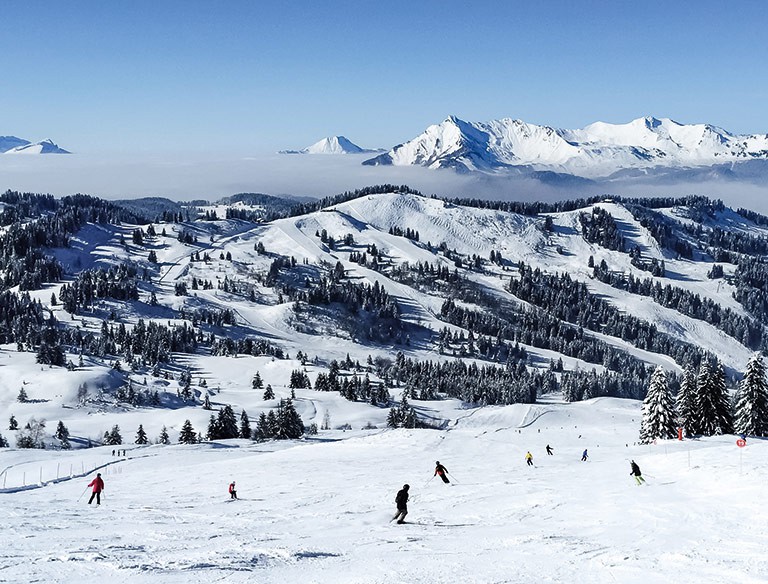
Mist drifts through the valleys north of Les Gets as skiers skim down the wide red run from the top of Le Ranfoilly. By day five this was my favourite piste – steep enough to be a real challenge, but wide enough to allow space for long, comfortingly slow turns.
I was slightly embarrassed, and just a little unnerved, but one thing was overriding all else: WOW! This was fun. The excitement, the adrenaline, the sense of accomplishment at getting even one little turn right – and all against a backdrop of the most beautiful mountain views I’d ever seen. I knew this was going to be a problem. I would want to come back to do it again and again, feeding the ski monster until I was racing down the pistes, swishing effortlessly through snow-laden trees and carving long sprays of powdery snow into pristine alpine slopes.
For now I was a rank novice, but it didn’t matter. Not even on that daunting red, with seasoned skiers and snow-boarders racing past on either side. As Sol had assured me, Les Gets (and by then I’d learnt to say it like a local – a bit like ‘leisure’ in a faux-French accent) was perfect for beginners. In the end-of-season quiet, the wide slopes were far from crowded, and at R3500 for gear rental, lift pass and 15 hours of lessons (a special six-day beginners’ package from the École du Ski Français) it wasn’t going to bankrupt me either. I had a baguette in my backpack and a ski pass on my sleeve, and
I couldn’t have been happier. Why had I never done this before?
Of course, it was the cost, or the perceived cost anyway. Skiing has never struck me as an affordable holiday, especially not for those living in South Africa. The Alps, in particular, seemed out of reach and when I first began planning the trip it was Eastern Europe that came to mind first – an area well known for its low-cost resorts and budget ski packages. After weeks of research, however, it was clear that skiing in the French Alps was a very competitive alternative. In January and March, self-catering chalets slash rates and I found a seven-sleeper, ski-in apartment for about R7500 per week – about R150 per person per night. Short of camping, it would be a struggle to find somewhere that affordable anywhere in South Africa. The flights were the biggest expense, but at the time – early 20015 – flights to Geneva were just over R7000 return and it was simply cheaper to reach the Alps than take a multi-stopover flight to Krakow or Bratislava.
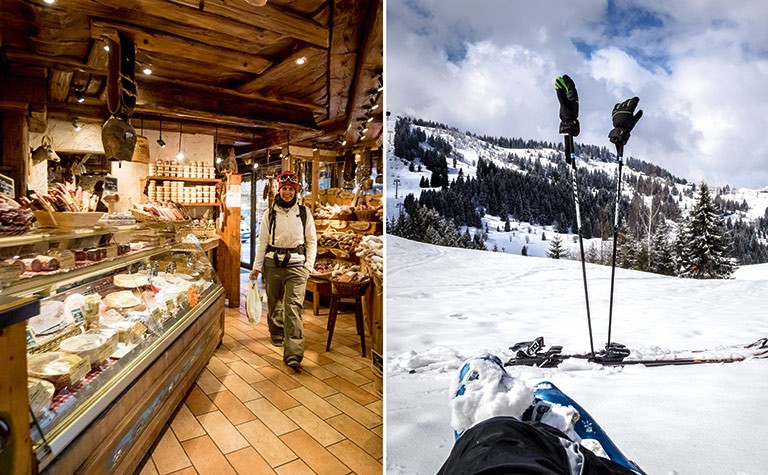
LEFT Sol picks up delicious supplies at a high-street deli in Les Gets; RIGHT taking a break on a quiet side piste.
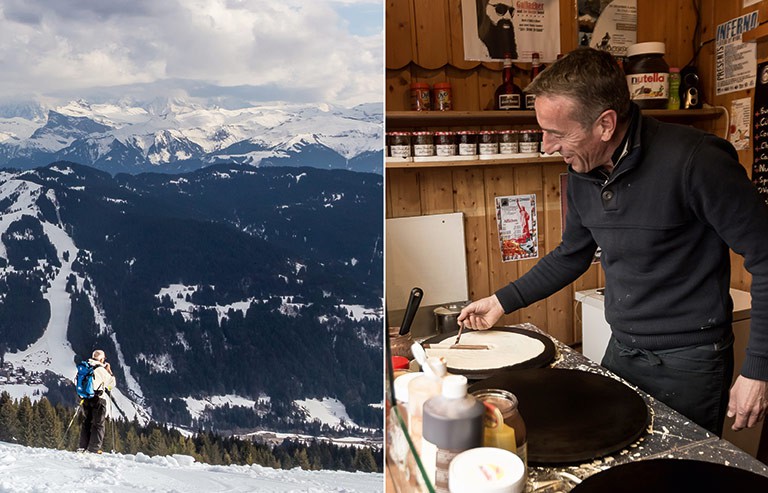
LEFT A snowshoe hiker pauses on Mont Chéry before starting the long walk home; RIGHT Crêpes are a tasty, inexpensive and surprisingly filling snack for around R50 each.
And I was enjoying Les Gets. Not only the skiing, which was new and wonderful and exhilarating, but the people and the village itself. Postcard-perfect, wooden chalets dotted the valley, with snow-dusted pine trees disappearing up the mountainside above. And it was all so well organised: from free local buses that were always on time, to the friendly assistance at the ski school and shops. Les Gets is popular with British visitors and English is spoken everywhere – without any trace of resentment. It seemed everyone was on holiday and everyone was having fun. The free tour of the local fromagerie was packed, the free vin chaud (mulled wine) at the weekly church-square ‘welcome drinks’ delicious (and bottomless), and there was ice-skating, a cinema, even a small (but fascinating) museum of mechanical music where mechanisms dating back to the 14th century were on display. There was plenty to do if you had any energy left after a long day of skiing.
Yes, I could definitely come back to this. I’m sure I will. I’ll have to save a bit for the next one, but at R18000 all in, it’s doable. My growing ski monster can feasibly be fed and next time those red slopes will hold no fear. Next time I’ll be parallel skiing like a pro. Next time I’d take on a black…
Getting to Les Gets
Emirates, Etihad and Qatar airways offer return flights to Geneva, although their lowest fares usually involve at least one over-night stopover. All three carriers provide free transit accommodation under certain conditions – usually if there is no shorter connection available, and the stopover is more than eight hours (Etihad provides this service to first- and business-class passengers only). If you play it right you can get a free bed and shower en route – check with your travel agent. For direct flights, Swissair and Edelweiss Air fly to Zürich from Cape Town and Joburg with a connecting flight to Geneva. From Geneva airport an hour-and-a-half bus transfer will drop you at your chalet door for R320 one way.
When to go
January and early March are the best times to visit the Portes du Soleil: January, for the best combination of snow and good value accommodation, and March for accommodation and the end-of-season sales. Book your accommodation now to get the most affordable deals. The longer you wait, the more you’ll lose out.
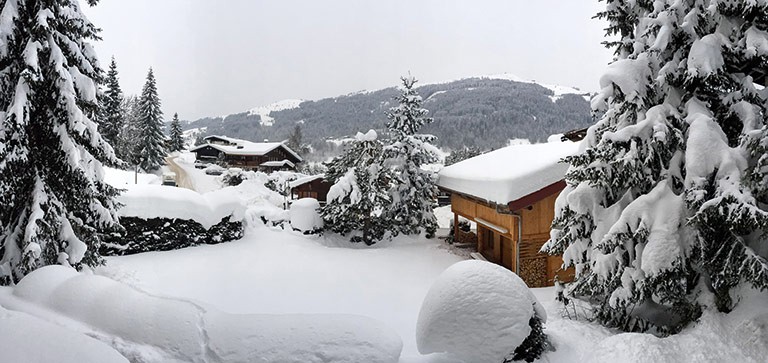
The view from our small apartment at 18 La Flambée the morning after a heavy snowfall.
Accommodation in Les Gets
Late in the season, the south side of Les Gets retains the most snow and is best for ski-in, ski-out accommodation. I stayed in the suburb of La Turche on the south-eastern edge and could ski to within 50 metres of the front door until the end of March.
18 La Flambée at 623 Route de la Turche is a cosy apartment on the ground floor of a timber complex with three bedrooms. R1070 per night for the whole apartment (sleeps seven).
Chalet 4 Frères is just around the corner. This freestanding chalet is ideal for bigger groups. It sleeps 10 comfortably, and there’s nothing but snow between the lounge and the tree line. From about R450 per person per night.
Chalet Les Eglantines is a lovely 10-sleeper luxury chalet on the north side of town (best for January bookings). There’s a sauna, and beautiful views across the village. From about R835 per person per night.
For a range of fully catered and self-catering options, try alpineinspirations.com or chalets1066.com.
Total Chalet Services arrange rentals and additional help, such as stocking the fridge before arrival (for about R268, plus the cost of the shopping), organising a babysitter and delivering cooked meals (from R135 per person for one course, from R200 for two).
Chalets are usually rented per week with a Saturday changeover (in at 4pm out at 10am) so time your arrival accordingly. A one-week deposit is usually required.

Ski instructors, Sylvain Gandy and Jean-Luc Bastard, in the red jackets of the École du ski Français. For two-and-a-half hours each day they cajoled and encouraged us, never losing patience with our beginners’ class.
Prices drop with group bookings and towards the end of the season. Christmas, New Year and France’s February holidays are the busiest and most expensive periods in the Alps. Early December can be cheaper, but fresh snowfall is not guaranteed.
Learning to ski
If you’re learning to ski, go through the official École du ski Français in Les Gets. The ‘Youcanski’ package must be booked in advance online, and is excellent value (for the 2014/2015 season the price was R2270 for three days or R3700 for six days). This includes a daily two-and-a-half-hour group lesson in English, local ski pass to the Les Gets/Morzine region and ski equipment hire. Grab a helmet. You won’t be alone and mine saved me from a sore head during a particularly comical fall.
If you don’t book a ski-school package, a six-day ski pass for Les Gets/Morzine costs about R2400, or about R3262 for the Portes du Soleil region.
Gear hire
There are plenty of places in town to hire gear, but I’d recommend hiring it all in advance online and having it delivered to your door when you arrive. Ski Mobile offers a fantastic service. They were friendly, efficient, and had lower rental prices than the high street shops. Everything was in great condition and they were happy to return any evening if anything was uncomfortable or not up to scratch. Adult beginner skis, plus boots and helmet were on special for just 88 euro for six days when I visited.
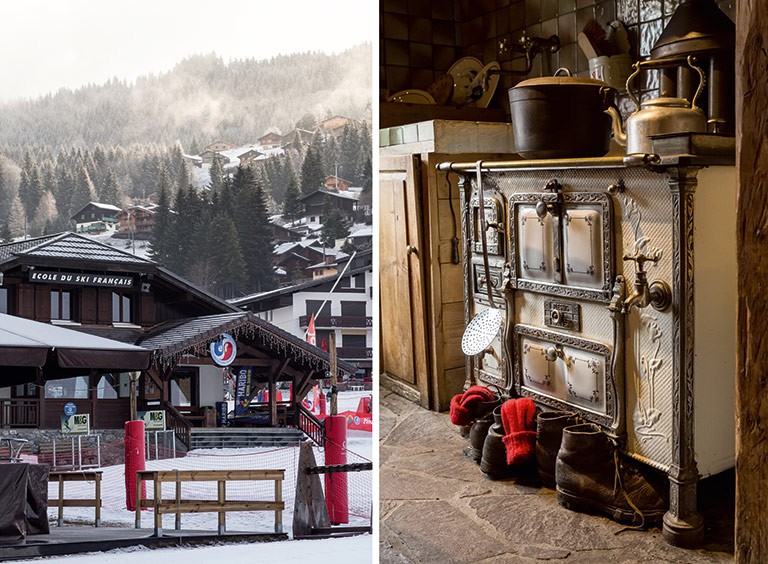
LEFT École du ski Français in Les Gets has excellent ski packages for beginners; RIGHT Inside La Fruitière des Perrières, Les Gets’ specialty cheese shop and restaurant.
Visit the tourist information centre on Route du Front de Neige when you arrive and collect a pamphlet on everything happening in town that week. And don’t forget sunscreen. The high altitude and UV rays reflected by the snow cause your face to burn.
Eating and drinking
Eating and drinking, and après ski (‘after ski’ – hitting the bars and restaurants after a long skiing session), can be pricey for South Africans. A pint at a trendy bar goes for about R110 and a typical main course between R200 to R340. I was on a tighter budget, but despite a colossal appetite from all the skiing, I didn’t go hungry. The local supermarket prices were much the same, and sometimes cheaper than home – and I found a very drinkable Bordeaux on the shelves for about R50.
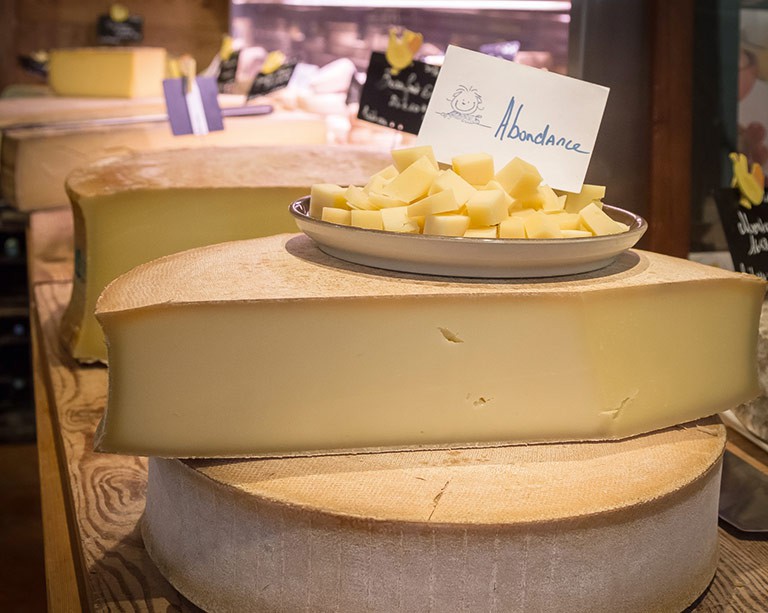
Handcrafted local cheeses are found throughout the Swiss-French border region, such as this Abondance cheese which is made exclusively from the unpasteurised milk of herds in the Adondance Valley, north of Les Gets. For centuries, it has been made in small batches using traditional methods.
Cost
This trip cost R18000 including flights, transfers, accommodation, food, six two-and-a-half-hour beginner ski lessons, ski pass and ski hire for a week. That doesn’t include a ski jacket and trousers or fancy wining, dining and après-ski and the rand value was calculated when our currency was somewhat healthier at 13.5 to the euro.
Know your slope grades
European slope grading differs slightly from that used in America where green, blue and two black classifications apply. In Europe, red denotes an intermediate slope, similar to an American blue.
- Green – very easy (practise area)
- Blue – easy
- Red – intermediate
- Black – expert
Also read: where to buy top quality South African ski gear
This article first appeared in the July 2015 issue of Getaway magazine.
All prices were correct at time of publication, but are subject to change at each establishment’s discretion. Please check with them before travelling.
